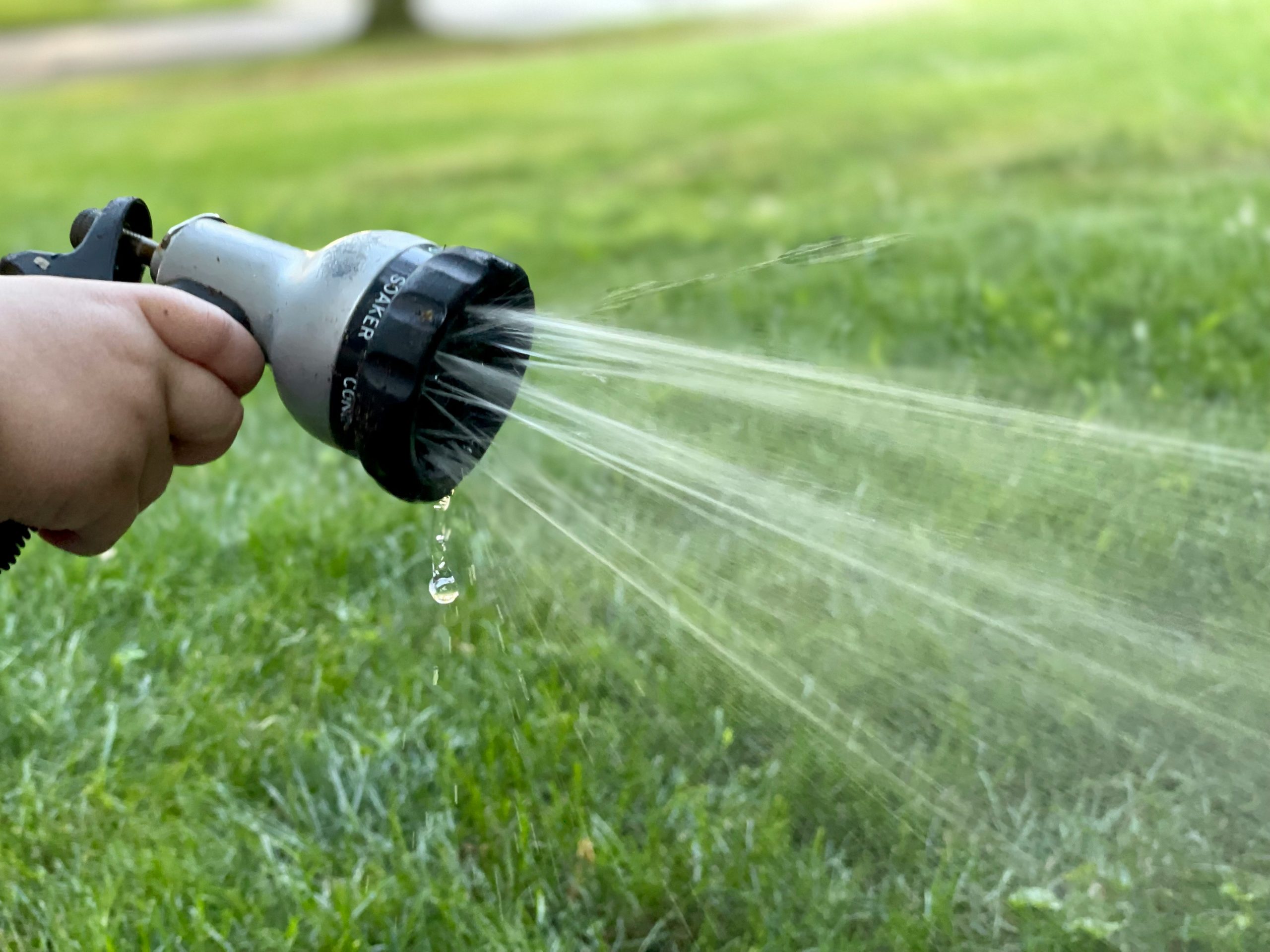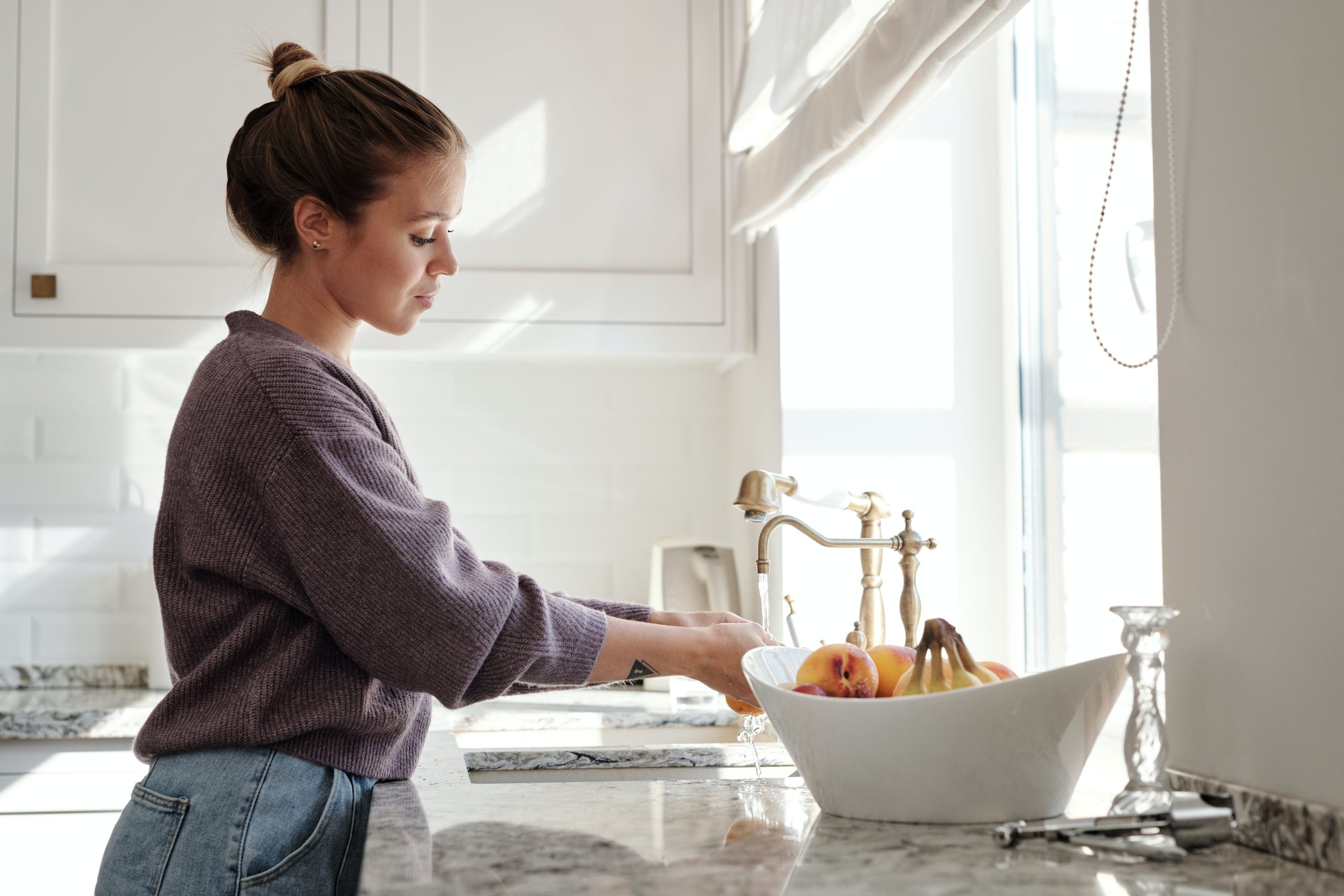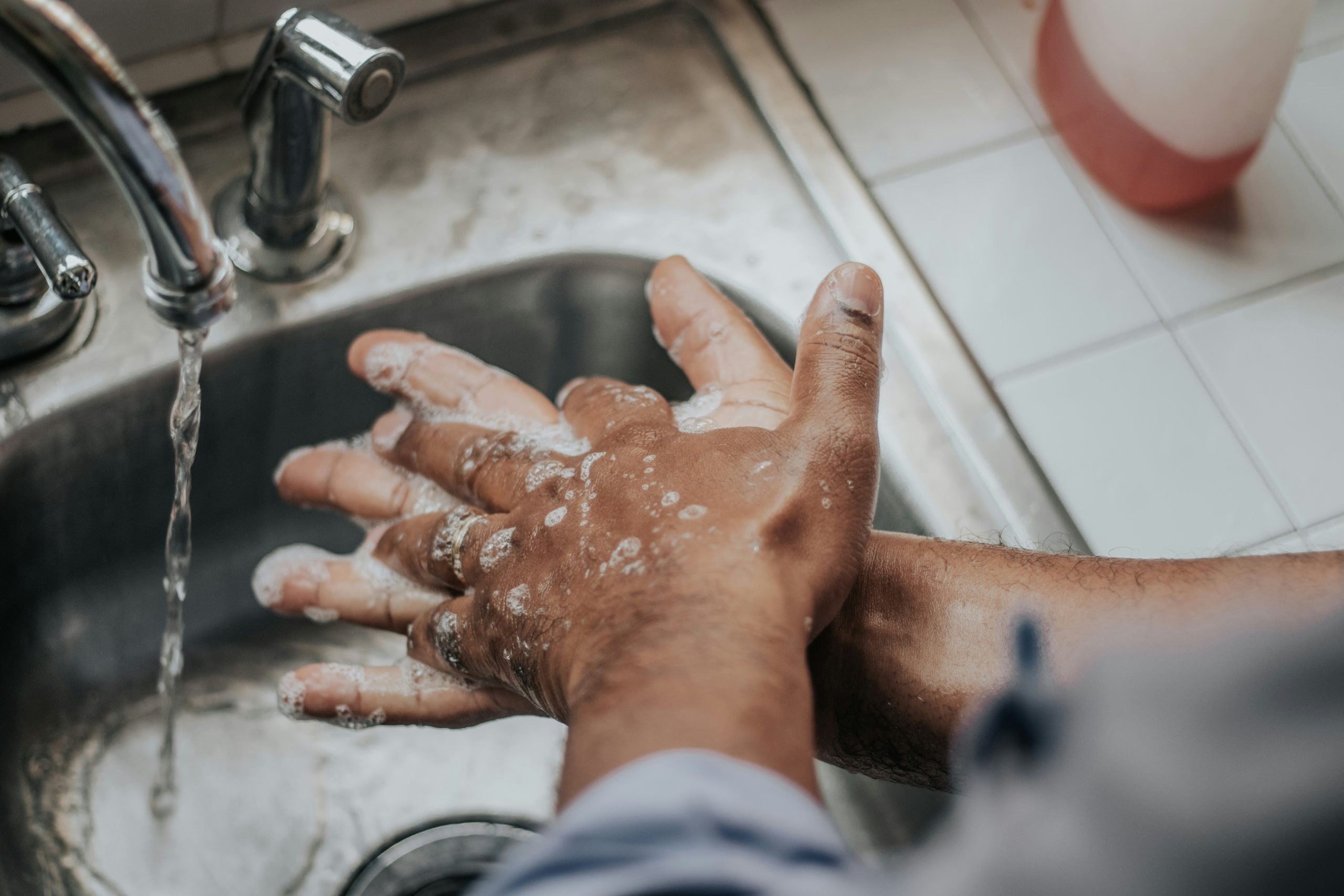Water, the lifeblood of our homes, flows through a network of pipes, bringing convenience to our daily routines. Behind every turn of the tap lies an often-overlooked hero: water pressure. It’s the force that propels water through our plumbing, ensuring showers are refreshing, dishes are clean, and our appliances operate seamlessly.
In this comprehensive guide, we’re about to embark on a journey into water pressure. From understanding its fundamental nature to deciphering the nuances of optimal levels and troubleshooting common issues, we’re here to empower you with the knowledge to master this vital aspect of home plumbing—supported by decades of expertise from Service by Scott.
As we delve into the intricacies of water pressure, you’ll discover how this seemingly subtle force profoundly influences the performance of your plumbing fixtures and appliances. Whether you’re a seasoned homeowner or a first-time buyer, we aim to demystify water pressure, empowering you to maintain a steady and efficient flow throughout your household.
Get ready to explore water pressure dynamics, learn how to measure it effectively, and gain insights into the factors that can affect its balance. Your journey to mastering water pressure, with the trusted guidance of Service by Scott, begins here—unlocking the secrets behind a flawlessly flowing home.

What is Water Pressure?
Water pressure is the unseen force that propels water through your home’s plumbing system, ensuring a steady flow from faucets, showers, and appliances. Simply put, it’s the measure of force exerted by water against the walls of pipes, expressed in pounds per square inch (PSI). This PSI value indicates the pressure applied over a given area, influencing the rate at which water moves through the plumbing network.
Defining Water Pressure
At its core, water pressure is the driving factor behind the efficiency of your plumbing system. Whether you’re filling a glass of water or enjoying a refreshing shower, water pressure dictates the flow and performance of your fixtures and appliances. Achieving the optimal balance of water pressure is essential for maintaining a smoothly functioning plumbing setup.
Measurement Metrics: PSI (Pounds per Square Inch) Explained
PSI serves as the standard unit of measurement for water pressure. It quantifies the force exerted by the water against the interior walls of pipes, faucets, and other plumbing components. Residential water pressure typically falls within the range of 40 to 80 PSI to ensure an ideal balance between flow rate and system longevity.
Understanding the significance of PSI in water pressure regulation is vital for homeowners. An excessive PSI level can strain plumbing components, leading to leaks or bursts, while insufficient pressure results in inadequate water flow. By comprehending the role of PSI, homeowners can effectively monitor and manage their water pressure for optimal performance.
Ideal Water Pressure Range
Achieving the perfect water pressure in your home is akin to finding the sweet spot on a well-tuned instrument. The ideal water pressure range is a critical factor for ensuring a harmonious flow throughout your plumbing system. In this section, we will explore the recommended pressure levels, the benefits of maintaining this balance, and the potential consequences of straying outside the optimal range.
Optimal Levels: Finding the Sweet Spot
The Goldilocks principle applies when it comes to water pressure—neither too high nor too low, but just right. The sweet spot for residential water pressure typically falls between 40 and 80 pounds per square inch (PSI). This range guarantees an efficient and reliable water flow, ensuring that your fixtures, appliances, and pipes operate at their best without unnecessary strain.
Maintaining water pressure within this optimal range offers several advantages. It promotes water conservation by optimizing the flow rate, ensuring that you get the performance you need without excessive water usage. Additionally, appliances like dishwashers and washing machines operate more effectively within this range, enhancing their longevity and efficiency.
Consequences of High/Low Pressure: Striking the Balance
Deviating from the recommended water pressure range can lead to various consequences. Excessive pressure puts undue stress on pipes, fixtures, and appliances, increasing the risk of leaks and malfunctions. On the other hand, inadequate pressure results in a sluggish flow, causing inconvenience in daily tasks such as showering or doing the dishes.
Understanding the impact of water pressure on your plumbing system empowers you to take proactive measures. Regular monitoring and adjustments, if needed, can help you strike the perfect balance, ensuring that your home’s water pressure aligns with the prescribed range for optimal performance and longevity.

Measuring Water Pressure
Delving into the intricacies of your home’s water pressure is the initial stride toward maintaining a smoothly functioning plumbing system. In this section, we’ll explore various methods of measuring water pressure, shedding light on both do-it-yourself approaches and the occasions when seeking professional assessment becomes imperative.
DIY Methods: Simple Ways to Measure Water Pressure at Home
For homeowners eager to gauge their water pressure independently, a range of straightforward do-it-yourself methods is available. A commonly employed approach involves utilizing a water pressure gauge, a simple device that easily attaches to a hose bib or designated faucet. By turning on the water and observing the gauge reading, you can obtain valuable insights into the current state of your water pressure. This DIY method acts as an initial checkpoint, allowing you to identify potential issues before they escalate.
Another accessible DIY method involves employing a basic yet effective tool: a bucket. By timing how long it takes to fill a standard-sized bucket, you can estimate the flow rate and, consequently, glean information about your water pressure. While not as precise as using a pressure gauge, this method offers a quick and accessible way for homeowners to assess the efficiency of their water flow.
Professional Assessment: Knowing When to Call in the Experts
While DIY methods offer valuable insights, certain situations warrant the expertise of professionals. If you observe significant fluctuations in water pressure, encounter persistent issues, or suspect an underlying problem, it’s prudent to engage the services of experts. Professional plumbers, such as those from Service by Scott, possess the tools and knowledge to conduct a thorough assessment of your plumbing system. Their meticulous analysis ensures a comprehensive understanding of your water pressure, enabling precise adjustments to bring it back within the optimal range.
By combining insights gained from DIY measurements with the expertise of professional assessment, homeowners can proactively manage and optimize their water pressure. This holistic approach ensures that your plumbing system operates at its best, providing a reliable and efficient water flow throughout your home, with the trusted support of Service by Scott.
Factors Affecting Water Pressure
Water pressure in your home is influenced by a myriad of factors, both internal and external. Understanding these factors is key to maintaining a stable and efficient plumbing system. In this section, we’ll explore the elements that can impact water pressure, from the intricacies within your home’s plumbing to external influences beyond your control.
Internal Factors: Home Plumbing System Considerations
Your home’s plumbing system plays a central role in determining water pressure. Factors such as the size and material of your pipes, the layout of your plumbing network, and the presence of pressure-regulating devices all contribute to the overall pressure experienced at your faucets. Aging pipes may accumulate mineral deposits, reducing the internal diameter and impeding water flow, while the correct installation of pressure regulators can help maintain consistent pressure levels throughout the system.
Leaks within your plumbing system are another internal factor that can significantly affect water pressure. A seemingly minor leak can lead to a gradual drop in pressure, impacting the overall performance of your fixtures and appliances. Regular inspections and timely repairs are crucial in mitigating the impact of internal factors on water pressure.
External Influences: Municipal Water Supply and Environmental Factors
Beyond the confines of your home, external factors can also play a pivotal role in shaping water pressure. The municipal water supply, governed by local regulations and infrastructure, directly influences the pressure delivered to your property. Fluctuations in demand, maintenance activities, or emergencies may lead to variations in water pressure, highlighting the interconnected nature of residential water systems.
Environmental factors, such as changes in elevation or extreme weather conditions, can also impact water pressure. Homes situated at higher elevations may experience lower pressure due to gravitational forces, while severe weather events like heavy rainfall can affect the local water supply. Understanding how these external factors interact with your plumbing system is essential for anticipating and managing variations in water pressure effectively.
Optimizing Water Pressure
Ensuring that your home’s water pressure is within the recommended range and consistently reliable is a crucial aspect of maintaining a well-functioning plumbing system. In this section, we’ll explore proactive measures and practical solutions for optimizing water pressure, including the role of pressure regulators and steps to address common issues.
Pressure Regulators: Installing and Maintaining for Consistent Flow
One of the key elements in maintaining optimal water pressure is the installation of pressure regulators. These devices act as guardians, ensuring that the pressure within your plumbing system stays within the desired range. Pressure regulators adjust the incoming water pressure to a preset level, preventing potential damage to pipes, fixtures, and appliances caused by excessive force.
Installing pressure regulators at the main water entry point to your home is a proactive step toward achieving consistent and reliable water pressure. Regular maintenance is equally crucial to ensure these devices continue to operate effectively. Periodic checks, adjustments, and, if necessary, replacements contribute to a plumbing system that functions seamlessly, providing a steady flow without the risk of pressure-related issues.
Fixing Common Issues: Addressing Leaks, Clogs, and Pressure Drops
Even with pressure regulators in place, addressing common issues within your plumbing system is paramount to optimizing water pressure. Leaks, whether visible or hidden, can lead to a gradual drop in pressure, affecting the overall performance of your fixtures and appliances. Regular inspections, prompt detection, and timely repairs are essential in mitigating the impact of leaks on water pressure.
Clogs within pipes, faucets, or fixtures can similarly obstruct water flow and, consequently, affect pressure. Through periodic cleaning and maintenance, homeowners can prevent the accumulation of debris, ensuring water moves freely through the system. As you embark on the journey of optimizing water pressure, count on Service by Scott to provide not only expert solutions for common issues but also proactive measures that contribute to a plumbing system operating at its best for the long term.

Troubleshooting Water Pressure Problems
Encountering issues with water pressure can disrupt the harmonious flow of daily life. In this section, we will embark on a journey of troubleshooting common water pressure problems, empowering homeowners to identify, understand, and address issues that may arise within their plumbing systems. Whether you’re dealing with sudden drops in pressure or persistent issues, the insights provided here will guide you toward effective solutions.
Identifying Issues: Recognizing Signs of Pressure-Related Problems
Understanding the signs of water pressure problems is the first step in effective troubleshooting. Sudden pressure drops, irregularities in water flow, or persistent issues with specific fixtures are common indicators that something may be amiss. Additionally, noises such as banging or hissing within the plumbing system can signal potential pressure-related issues. By paying attention to these signs, homeowners can narrow down the source of the problem and take targeted steps toward resolution.
DIY Fixes vs. Professional Help: Knowing When to Tackle Issues Yourself
As a homeowner, the decision between attempting a do-it-yourself fix and seeking professional help depends on a clear understanding of the nature of the issue. Minor problems, such as a clogged faucet aerator or a partially closed water shut-off valve, may be well within the realm of DIY solutions. However, when grappling with more complex issues like hidden leaks or problems within the main water supply line, the expertise of a professional plumber, such as those at Service by Scott, becomes invaluable.
Navigating the troubleshooting process involves balancing DIY know-how and an awareness of when to engage professional assistance. As we delve into common water pressure problems and explore potential solutions, remember that the dedicated team at Service by Scott stands ready to provide expert guidance and support. Their commitment ensures that your plumbing system operates optimally, restoring a steady and reliable flow to every corner of your home.
Conclusion
In unraveling the intricacies of water pressure, we’ve journeyed from understanding its fundamental nature to troubleshooting common issues that can disrupt the seamless flow of daily life. The optimal water pressure range, the significance of PSI, and the impact of internal and external factors have been explored to equip you with the knowledge to maintain a well-functioning plumbing system.
As you embark on the path of optimizing and troubleshooting water pressure, remember that a proactive approach is key to ensuring the longevity and efficiency of your plumbing. Regular checks, DIY fixes, and knowing when to seek professional assistance are the pillars of a reliable water pressure maintenance strategy.
At Service by Scott, we understand the importance of a plumbing system that operates at its best. With over 30 years of expertise, our family-owned and operated business stands ready to be your partner in maintaining optimal water pressure. Don’t let water pressure problems disrupt your daily life – contact Service by Scott today. Let us ensure that your plumbing system flows smoothly, providing you with the comfort and reliability you deserve.
FAQs
What is the ideal water pressure for a home?
The ideal water pressure for a home typically falls within the range of 40 to 80 pounds per square inch (PSI). This ensures efficient water flow without causing unnecessary stress on plumbing components.
How can I measure water pressure without special tools?
A simple DIY method involves using a water pressure gauge. Attach it to a hose bib or a designated faucet, turn on the water, and observe the gauge reading. This provides a quick and accessible way to measure water pressure at home.
What causes sudden drops in water pressure?
Sudden drops in water pressure can be caused by various factors, including leaks, clogs, or issues with the municipal water supply. Identifying the specific cause involves troubleshooting the plumbing system to pinpoint and address the underlying problem.
Do pressure regulators need regular maintenance?
Yes, pressure regulators should undergo regular maintenance to ensure they operate effectively. Periodic checks, adjustments, and, if necessary, replacements contribute to a plumbing system that maintains consistent and reliable water pressure.
When is it time to call a professional for water pressure issues?
If you experience significant fluctuations in water pressure, encounter persistent issues, or suspect complex problems within your plumbing system, it’s time to call a professional. Plumbers, like the experts at Service by Scott, have the tools and knowledge to conduct a thorough assessment and provide tailored solutions.

